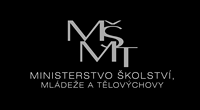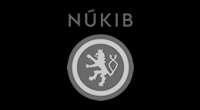Support us
Support our activities and help children and adults in need. For 15 years we have been helping children and adults solve their problems online. Get involved too! Every help counts! Just click on the DONATE button.Other articles
 Artificial intelligence has become a common part of our lives – it helps us translate texts, create images, and organize tasks. However, with its rapid development, new threats have emerged that we could hardly imagine just a few years ago. One of the most serious is the phenomenon known as deep nudes. These are fake nude photographs created by artificial intelligence from ordinary images of people. Unfortunately, this trend does not affect only adults but increasingly also children and adolescents. The psychological impact on victims can be devastating.
Artificial intelligence has become a common part of our lives – it helps us translate texts, create images, and organize tasks. However, with its rapid development, new threats have emerged that we could hardly imagine just a few years ago. One of the most serious is the phenomenon known as deep nudes. These are fake nude photographs created by artificial intelligence from ordinary images of people. Unfortunately, this trend does not affect only adults but increasingly also children and adolescents. The psychological impact on victims can be devastating.
 AI chatbots are no longer just assistants. They are becoming companions, friends – and sometimes even partners. What may seem like comfort for the lonely can be a problem for children and teenagers. AI will never reject us. But real life isn’t like that. Are we heading into a future where it will be easier to love a machine than a human?
AI chatbots are no longer just assistants. They are becoming companions, friends – and sometimes even partners. What may seem like comfort for the lonely can be a problem for children and teenagers. AI will never reject us. But real life isn’t like that. Are we heading into a future where it will be easier to love a machine than a human?
 In recent years, the OnlyFans platform has attracted unprecedented attention. Some see it as a revolution in online entertainment, while others warn of potential risks associated with explicit content and the lack of protection for underage users. So, what is the allure (and danger) of this platform that attracts millions of people worldwide? And why should we be cautious about who uses it and how?
In recent years, the OnlyFans platform has attracted unprecedented attention. Some see it as a revolution in online entertainment, while others warn of potential risks associated with explicit content and the lack of protection for underage users. So, what is the allure (and danger) of this platform that attracts millions of people worldwide? And why should we be cautious about who uses it and how?
 There are places on the internet that at first glance appear to be forums for sharing male experiences and support among men. In reality, however, they often spread hatred towards women, contempt for girls, and rejection of equality. These communities are collectively referred to as the manosphere and can be very dangerous for adolescent boys.
There are places on the internet that at first glance appear to be forums for sharing male experiences and support among men. In reality, however, they often spread hatred towards women, contempt for girls, and rejection of equality. These communities are collectively referred to as the manosphere and can be very dangerous for adolescent boys.
 Mystery boxy se v posledních letech staly obrovským hitem, zvláště mezi mladými lidmi. Tato online zábava, kdy si uživatel zakoupí krabici s neznámým obsahem, ale nese značná rizika a mnozí odborníci ji dokonce považují za formu hazardu. Jaká nebezpečí se za mystery boxy skrývají?
Mystery boxy se v posledních letech staly obrovským hitem, zvláště mezi mladými lidmi. Tato online zábava, kdy si uživatel zakoupí krabici s neznámým obsahem, ale nese značná rizika a mnozí odborníci ji dokonce považují za formu hazardu. Jaká nebezpečí se za mystery boxy skrývají?
Ocenění projektu E-Bezpečí

KYBER Cena 2023
(1. místo)

Nejlepší projekt prevence kriminality na místní úrovni 2023
(1. místo)

Evropská cena prevence kriminality 2015
(1. místo)

KYBER Cena 2023
(1. místo)

Nejlepší projekt prevence kriminality na místní úrovni 2023
(1. místo)

Evropská cena prevence kriminality 2015
(1. místo)
E-BEZPEČÍ: AI CHATBOT

xAhoj, jsem chatovací robot projektu E-Bezpečí a mohu ti pomoci zodpovědět základní otázky a vyřešit tvé problémy. Zvol si z nabídky, nebo svůj dotaz napiš přímo do chatu.
MÁM PROBLÉM
ZAJÍMÁ MĚ VZDĚLÁVÁNÍ
ZAJÍMAJÍ MĚ TISKOVINY






























